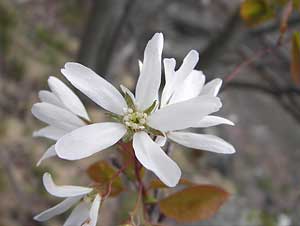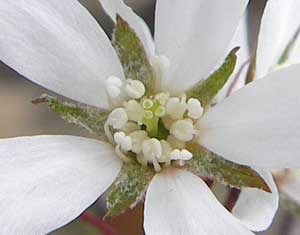sepals and petals
Sepals are the outermost organs of a complete* flower, commonly green and enclosing the inner structures in the bud stage. Collectively, the sepals constitute the calyx.
Petals are situated inside of the sepals, and surround the reproductive organs in the center of the flowers; they are commonly white or a non-green color. The petals collectively constitute the corolla. Colored petals function in attracting pollinators and the sometimes intricate patterns on them guide the pollinators to nectaries. (Wind pollinated flowers have either drab sepals or none.)
The term tepal is used to describe individual petals and sepals when the form of the sepals is indistinguishable from that of the petals.
The sepals and petals togther (or all tepals together) constitute the perianth.
*A complete flower is one with all floral parts: sepals, petals, stamens and pistils . There may be additional modified leaves (bracts) closely associated with the flower. According to the taxa, the individual flowering parts may be entirely discrete or show various degrees of fusion.
For more on flower structure, please consult The Flower (a page on the website of the Robert W. Freckmann Herbarium) and Kew Information Sheet #4 (PDF document).



Above: Amelanchier arborea in May. Top: sepals enclose innner structures (May 11). Middle: flower, open (May 21). Bottom: close-up of center of flower revealing 5 discrete sepals, 5 discrete petals,
20 discrete stamens and a compound pistil. (Photos by JackPine
)